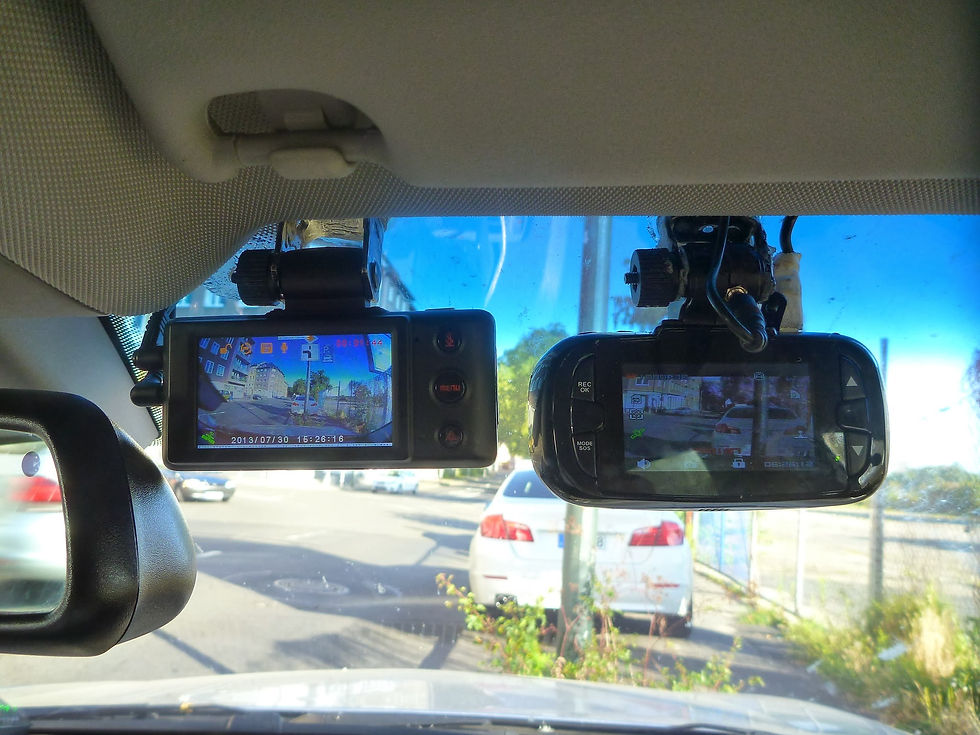No, that is not a typographical error. Sousveillance (soo-VAY-ləns) is a word. Explained simply: If surveillance is watching from above, sousveillance is watching from below. The term was coined by Canadian researcher and inventor Steve Mann, who is best known for his work on wearable technology. Mann describes it as the use of surveillance technologies by ordinary people to increase equality by exposing the unseen workings of large institutions and groups.
A drawing by Mann's six-year-old daughter, showing the difference between surveillance and sousveillance (via WikiMedia Commons)
The classic example that everyone has come across is cell phone footage of police brutality or excessive force being used to pacify a protest. This sort of sousveillance can also be described as inverse surveillance, as citizens are recording and holding accountable the authority figures who are supposed to keep them safe.
However, sousveillance entails more than just pointing a camera at law enforcement. It also includes personal sousveillance, which is the use of surveillance technologies to record our everyday activities and what occurs around us, then sharing it with others. Whether it’s through Steve Mann’s elaborate wearable computers or through the camera in your phone, everyone takes part in personal sousveillance in one way or another.
In the motoring community, the dash-cam is best known example of personal sousveillance. The reason we install one in our vehicle is to monitor our driving, but more importantly monitor the driving of others. If you're involved in a collision, dash-cam videos are useful for retrieving information such as the time of the incident, license plate number and car make and model details. However, what started as a private means of monitoring driving quickly became an online phenomenon as drivers started to upload their dash-cam videos onto social media with the intention of shaming bad driving or showing accidents. At the time of writing, the Facebook page Dash Cam Owners Australia has over 700,000 likes and searching “dash cam videos Russia” (where dash-cam usage is mandatory) on YouTube will result in hundreds of videos, a lot of which have over a million views.

Where does the GPS tracking device fit in the realm of sousveillance? Much like the dash-cam, we install GPS trackers in our cars because we want to monitor ourselves and our surroundings – this time in a more discrete way. The GPS tracker can be used to track where we drove, how fast we were driving, how long we stayed in a particular area and how far we travelled. The data recorded by a GPS tracker could be used to show off where you went on your most recent road trip, warn others about thieves in a certain area or show where you had an accident.
However, given that the nature of sousveillance is more personal, we can label GPS tracking as passive sousveillance and dash-cam recording as active sousveillance. For dash-cam recording to happen, the device itself must be switched on by the driver, making them cognizant of its presence. The video recorded then acts a point-of-view shot of their driving experience. When watching a dash-cam video you can relate to the events unfolding through the audio, such as the words spoken by the driver and the sound the vehicles make, and through the video of what was recorded.
A GPS tracker attached to a car places more emphasis on the vehicle rather than the driver, who is often not cognisant of the tracker’s presence. The data recorded is purely representational, as no audio or video is recorded through a GPS tracker. The raw data displays a more indirect experience of where they were and what happened. Given the lack of a more personal experience afforded by GPS trackers, it is unsurprising that the online presence of GPS trackers is nowhere near as widespread as the dash-cam.
We can conclude that sousveillance in the motoring community occurs in both active and passive forms. The dash-cam actively displays the driver’s experience through a POV shot. The GPS tracker is a passive sousveillance tool that gives representational data rather. However, the reason why someone installs one or the other is the same: to monitor ourselves and those around us. Where they differentiate is in what they are monitoring and when. The dash-cam monitors what we do on the road, whilst the GPS tracker is for what happens when we are away from our car. The word “sousveillance” is not very well known. However, we may not realise it, but sousveillance culture is very much alive and thriving in the motoring community.


